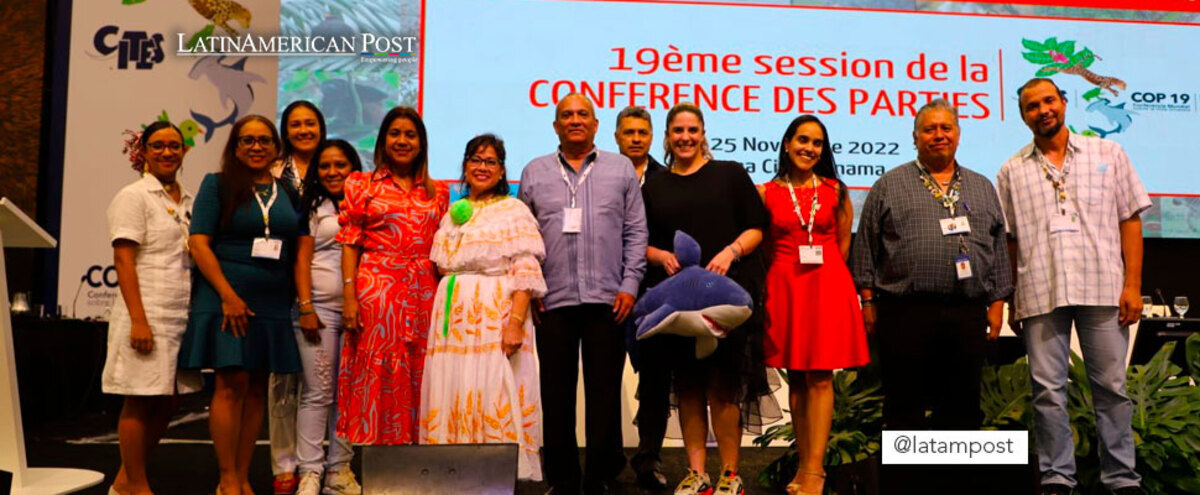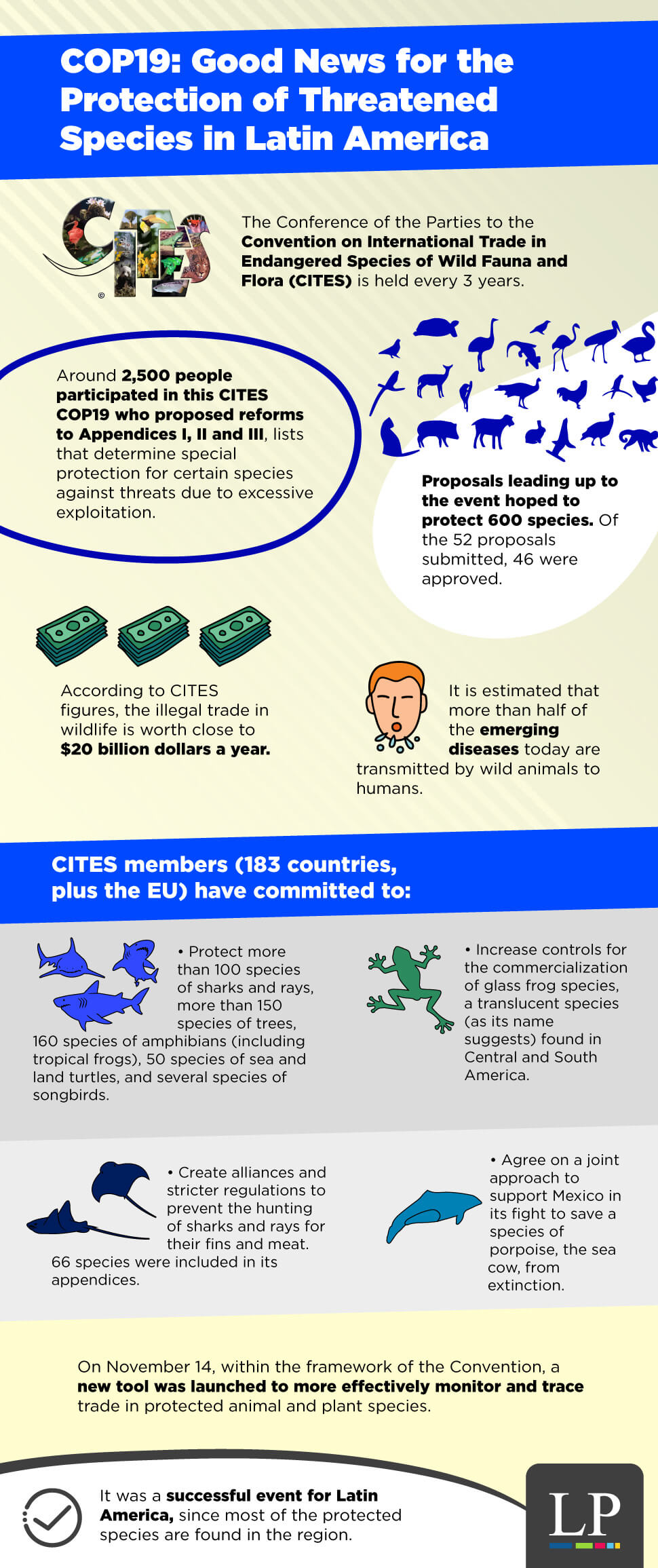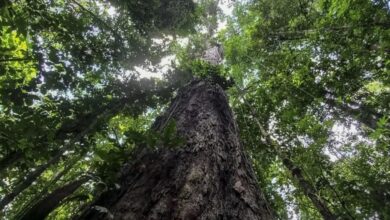Infographic: COP19: Good News for the Protection of Threatened Species in Latin America
Representatives from Countries All Around the World have Come Together to Make Agreements on the Protection of Endangered Species and their Trafficking. We tell you About Some of the Most Relevant Advances.

Photo: TW-CITES
LatinAmerican Post | María Fernanda Ramírez Ramos
Escucha este artículo
Leer en español: Infografía: COP19: buenas noticias para la protección de especies amenazadas en Latinoamérica
From November 14 to 25, the 19th Conference of the Parties (COP19) of the Convention on International Trade in Endangered Species of Wild Fauna and Flora or CITES was held in Panama. This is the fourth meeting in this framework that takes place in Latin America and the Caribbean. The provisional list of proposals passed by the participating countries sought protection for nearly 600 species of both fauna and flora.
This is a particularly sensitive issue for Latin America and the Caribbean, since, in this region, illegal trafficking is a million-dollar business. However, more and more organizations and governments are coming together to stop this illegal trade and protect biodiversity, taking into account the serious state of threat in which it is found. It should be noted that international trade in more than 38,000 species of wild plants and animals is regulated by CITES. Next, we tell you the new decisions:
We recommend you read: Latin America: The Region Where Wildlife is Lost the Most

"Trade supports human well-being, but we need to mend our relationship with nature. The decisions that emerge from this meeting will serve the interests of wildlife conservation and trade, which does not threaten the existence of plant and animal species in nature, for future generations”, pointed out CITES Secretary General, Ivonne Higuero.
"The online RST Management System will have details of all combinations of species and countries that are being tracked," according to CITES. For this reason, these elements are expected to be a key tool to detect the most vulnerable species and prevent them from being trafficked. However, it is also necessary to implement processes to prevent corruption of officials and for more transport and logistics companies to implement rigorous regulations and policies.




